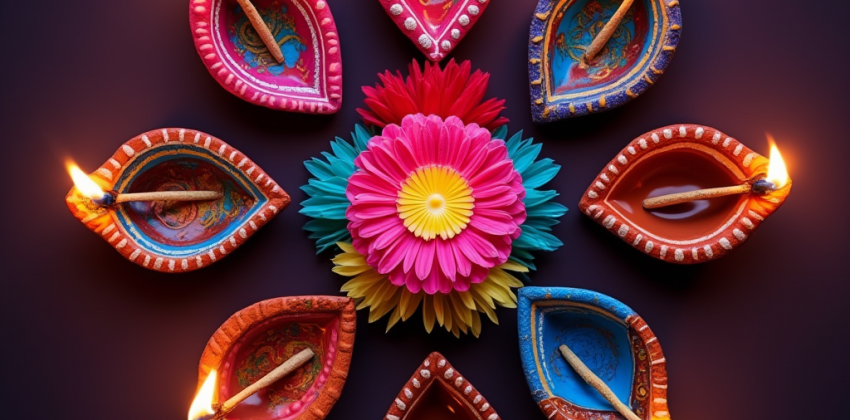
What Diwali Means: Traditions, Symbols
A simple, friendly guide to how we celebrate Diwali at the temple and at home.
What Diwali is
Diwali is the festival of lights. We welcome light, kindness, and fresh starts. Families visit the temple, light lamps, share sweets, and greet each other with warm wishes.
Why we celebrate
Different regions tell different stories. Many remember Rama returning to Ayodhya. Some honor Lakshmi for prosperity and clean living. Some focus on Krishna and Narakasura. The heart is the same: let goodness shine, let fear and confusion fade.
The meaning of light
A lamp is a small promise. Where there is light, there is clarity. When we light one at the temple, we say this with our hands: may my thoughts be clear, may my actions help others.
Symbols you will see
- Lamps with ghee or oil: steady light, steady mind
- Rangoli at the entrance: welcome and beauty
- Flowers and garlands: freshness and respect
- New clothes: a clean start
- Sweets and fruits: shared joy
What happens at the temple
Priests offer special aarti. The space is bright with lamps and flowers. Devotees chant Lakshmi and Rama names. Many temples share prasad like laddus, kheer, or pongal. You can join the light offering, place a small lamp, or add flowers near the shrine.
Simple etiquette
Arrive on time. Follow the aarti lead. Keep your phone silent. Move with the flow when lines form. If unsure, ask a volunteer. Everyone is there to help.
A short Lakshmi focus
Many families clean their homes before Diwali night. At the temple, we offer light and simple coins to Lakshmi. The wish is not just wealth in money. It is also clean habits, fair work, and kind use of what we have.
Sound and song
Bells, conch, and bhajans fill the space. Repeating a simple line keeps the mind steady. If you do not know the words, hum a long aa sound and follow along.
Colors and rangoli
People make rangoli near doorways with rice flour or petals. It greets guests and points the way inside. At the temple, you may see large patterns near the main hall. Step around them if you can, not across.
Food and prasad
Sweets are a big part of Diwali. Common items: laddus, barfi, jalebi, and kheer. Offer to the deity first, then share with loved ones. If you have allergies, ask the prasad team. They can guide you.
Safety with lamps
Keep lamps on a stable plate. Clear the area of cloth and paper. Do not leave a flame alone. Snuff gently if you need to step away.
For kids and families
Give kids a small role. Let them place a flower, carry a lamp with you, or say one short line like Om Shreem Mahalakshmyai Namaha. Take a photo by the rangoli after the crowd thins.
Give and service
Diwali is a good time to share. Bring pantry items for local food aid if your temple collects them. Offer time to help clean before or after events. Small care adds up.
Quick Q and A
What day is best to visit the temple during Diwali week? Any evening is fine. The main night is busiest and most bright.
Do I need Sanskrit? No. Your calm presence and clear intent are welcome.
What should I wear? Clean, modest clothes. Light colors feel festive.
Can non-Hindus visit? Yes. All are welcome to observe with respect.
Try this at home
Pick one room to tidy. Place a small lamp in a safe spot. Say one kind wish for someone who needs support. Share a sweet with a neighbor or friend.
Want a one page guide
Tell me your temple name and city. I can send a print sheet with aarti times, a simple Lakshmi puja outline, and a short shopping list.
Finally
Diwali is light shared hand to hand. Bring a lamp, bring a song, bring your kind heart. May your week be bright and steady.

Leave a Comment